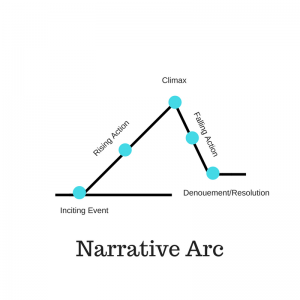Writing is revising, as they say. Going from first to second draft can be overwhelming, though, especially for novelists working with 50,000~ words. How does one wrangle all those words into something polished?
There are as many ways to write as there are writers, and not every tactic works for every person. That being said, there are tools that many writers find useful. Here are some things you can do to make the revision process easier to wade through.
Break it down.
One way to stave off the overwhelming feeling of staring at a several hundred page document is to work on it in smaller chunks. Whether you sort your sections by chapter, scene, or some other system that works for you, editing one piece at a time makes the entire process more manageable.
There are several ways to do this. I’ve found that EverNote, MS OneNote, and Scrivener are all great programs for this. These programs let you break down your files into stackable levels–scenes within chapters within books, if you will. I keep my poetry organized with Evernote by keeping each poem on a page, and putting the pages in notebooks organized by theme. OneNote and EverNote are similar programs–OneNote is included in the Microsoft Office Suite, while EverNote is a free downloadable software. Scrivener is a more in-depth software created specifically for writers working on large projects. It has a price tag attached, but I know several writers who swear by it and the organization it brings to their work.
Look at the forest.
In the “break it down” stage, you’re looking at each piece of your story individually, but eventually, you’ll need to take a step back and make sure the pieces create a cohesive whole. It’s easy to get lost wandering through the trees of scenes and forget about the story you’re trying to tell. That’s why it’s important to keep the shape of your story in your mind. Once again, there are several ways back up and focus on the big picture.
The first way is to outline. Even if you already have the first draft written, outlining can be a valuable way of making sure that the story is structured rather than hanging limp. Go through your story and see how the scenes fit together.
A second method is charting the arc. The narrative arc is the flow that all stories follow: inciting event, rising action, climax, falling action, and resolution. Drawing out a chart and figuring out where each scene fits in the arc can be a useful way keeping the shape of your story at the forefront of your mind.

Another strategy is to use notecards. Write a scene on each card, then arrange them and rearrange them as you see fit. These notecards can be physical (pin them to a corkboard!) or digital (EverNote and Scrivener both have notecard functions).
Whatever method you use, taking a step back and appreciating the full forest of your story is a great way to find weak points. These methods also work for arranging poems, essays, or short stories within a collection.
Mark it up.
Once you have a finished draft, go through it and make notes. You can do this by hand or digitally. I recommend changing the font before you start each reread. It sounds silly, but looking at the page in a different typeface gives you a new perspective, and helps you catch typos more easily.
Some people prefer to print their drafts and mark it up by pen. If you do this, make the lines double or triple spaced and use a kind pen color (red can be intimidating). Once you’re finished, go through and enter your changes into the digital document.
You can also annotate digitally. MS Word and Google Docs have a comment feature that allows you to make notes in the margins. You can also track changes in Word so that you always know what you have changed. These features have made my revision process so much easier, and I recommend it to everyone.
Cover the basics
Even the most seasoned writers make clerical errors. Run your document through a spelling and grammar check feature to catch any obvious errors (though read it through yourself again–some mistakes slip through). MS Word and Google Docs both have spell check built in, or you can download a program like Grammarly. Clean copy is important–editors and contest judges look at spelling and grammar when they read through your work, so make sure your piece is as error-free as possible.
Start at the end
Reading your work for the upteenth time can be exhausting, and it’s easy to go on autopilot. To keep your focus, try reading your work from end to beginning. Doing this at the sentence level helps you focus on the sentence structure and word choice, while at the scene and chapter level, the exercise allows you to focus on the action in the scene apart from the story as a whole.
Read it aloud
There are many benefits to reading your work aloud. It helps you catch those pesky typos mentioned earlier, brings your attention to phrases that your tongue stumbles over, and gives you a better idea of the cadence, tone, and pacing of the story. Speaking aloud for a long period of time can be tiring, so make sure you have a glass of water or a mug of tea handy, but the practice results in a more polished manuscript.
The revision process can be daunting, but there are so many tools to make it manageable. What tools and tactics do you use while editing a draft? Let me know in the comments below!
- New Year Writing Goals - January 19, 2019
- Writer’s Toolbox - October 15, 2018
- Embracing Identity - July 30, 2018

